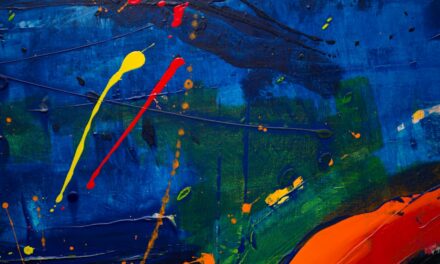Nature is a boundless source of inspiration, teeming with forms and patterns that evoke a sense of wonder and beauty. Organic motifs, characterised by their fluid lines and natural shapes, reflect the intricate designs found in the environment around us. From the delicate curves of a leaf to the spirals of a seashell, these motifs resonate with the rhythms of life, embodying the essence of growth, transformation, and harmony.
The beauty of organic forms lies not only in their aesthetic appeal but also in their ability to connect us to the natural world, reminding us of our place within it. The allure of organic motifs is deeply rooted in their ability to evoke emotions and memories. The gentle undulations of a riverbank or the intricate patterns of a butterfly’s wings can transport us to serene moments spent in nature.
As we explore the myriad ways these motifs manifest in our surroundings, we begin to appreciate the profound impact they have on our lives, influencing everything from our emotional well-being to our creative expressions.
Summary
- Organic motifs in nature showcase the beauty of natural patterns and shapes, inspiring creativity and design.
- The diversity of organic patterns in the natural world offers endless inspiration for artistic and design exploration.
- Flora and fauna provide a rich source of inspiration for designers, offering a wide range of organic motifs to incorporate into their work.
- Interior design can be enhanced by incorporating organic motifs, bringing a sense of nature and tranquility into living spaces.
- Fashion and textile design can be elevated by using organic motifs, creating unique and timeless pieces inspired by the natural world.
Exploring the Diversity of Organic Patterns in the Natural World
The natural world is a veritable tapestry of organic patterns, each unique yet interconnected. From the fractal geometry of ferns to the swirling patterns of galaxies, these designs are a testament to the complexity and diversity of life. The study of organic patterns reveals a fascinating interplay between structure and chaos, where order emerges from seemingly random arrangements.
This duality is evident in the way tree branches spread out or how clouds form intricate shapes in the sky, showcasing nature’s ability to create beauty through both symmetry and asymmetry. In addition to their visual appeal, organic patterns serve essential functions within ecosystems.
Similarly, the intricate designs found on animal skins often play a role in camouflage or mating displays. By observing these patterns, we gain insight into the evolutionary processes that shape life on Earth. This understanding can inspire artists and designers to incorporate these natural principles into their work, fostering a deeper appreciation for the interconnectedness of all living things.
Drawing Inspiration from Flora and Fauna for Design
Flora and fauna have long been a wellspring of inspiration for artists and designers alike. The vibrant colours, intricate textures, and unique forms found in plants and animals offer endless possibilities for creative expression. Designers often look to nature for guidance when developing new products or visual identities, drawing on the organic shapes and patterns that resonate with consumers on an emotional level.
This practice not only enhances aesthetic appeal but also promotes sustainability by encouraging the use of natural materials and processes. The influence of flora and fauna can be seen across various design disciplines, from graphic design to product development. For instance, the elegant curves of a flower petal may inspire the silhouette of a chair, while the vibrant hues of a tropical bird can inform a colour palette for a fashion collection.
By embracing these natural inspirations, designers can create work that feels both timeless and contemporary, bridging the gap between nature and modernity. This synergy not only enriches the design process but also fosters a greater appreciation for the beauty that surrounds us.
Incorporating Organic Motifs in Interior Design
Incorporating organic motifs into interior design can transform spaces into serene sanctuaries that reflect the beauty of nature. By integrating elements such as flowing lines, natural materials, and earthy colour palettes, designers can create environments that promote relaxation and well-being. Organic motifs can manifest in various ways, from furniture with curvilinear forms to wall art featuring botanical prints.
These elements work together to create a cohesive aesthetic that invites occupants to connect with their surroundings. Moreover, organic motifs can enhance the functionality of interior spaces. For example, incorporating biophilic design principles—such as maximising natural light or integrating indoor plants—can improve air quality and overall mood.
The use of organic shapes in furniture design can also promote comfort and usability, encouraging social interaction and relaxation. By thoughtfully integrating these motifs into interior spaces, designers can create harmonious environments that nurture both physical and emotional well-being.
Using Organic Motifs in Fashion and Textile Design
The world of fashion and textile design is profoundly influenced by organic motifs, which offer a rich source of inspiration for creating unique garments and fabrics. Designers often draw upon the shapes, colours, and textures found in nature to develop collections that resonate with consumers on an emotional level. Floral prints, animal patterns, and abstract representations of natural forms are just a few examples of how organic motifs can be woven into fashion narratives.
In recent years, there has been a growing emphasis on sustainability within the fashion industry, prompting designers to explore eco-friendly materials and production methods. This shift has led to an increased interest in organic motifs as a means of celebrating nature while promoting responsible consumption. By using natural dyes derived from plants or employing techniques that mimic organic patterns, designers can create textiles that not only look beautiful but also tell a story about their connection to the environment.
This approach fosters a deeper appreciation for both fashion and nature, encouraging consumers to make more conscious choices.
Creating Artwork Inspired by Natural Forms and Shapes
Exploring Materials and Techniques
Incorporating organic motifs into artwork can also encourage experimentation with materials and techniques. Artists may choose to work with natural materials such as wood, clay, or stone to create pieces that reflect their connection to the environment. Alternatively, they may employ innovative methods such as digital manipulation or mixed media to reinterpret organic forms in new ways.
Enriching the Artistic Process
This exploration not only enriches the artistic process but also invites viewers to engage with the artwork on multiple levels, fostering a deeper understanding of both nature and creativity.
A Deeper Connection with the Human Experience
The use of organic motifs in art allows for a deeper connection with the human experience, as it explores themes that resonate deeply with us. This connection is what makes art so powerful and thought-provoking.
Incorporating Organic Motifs in Architecture and Landscaping
The integration of organic motifs into architecture and landscaping has gained significant traction in recent years as architects and designers seek to create spaces that harmonise with their natural surroundings. By incorporating elements such as flowing lines, natural materials, and biophilic design principles, architects can create structures that not only serve functional purposes but also enhance the aesthetic appeal of their environments. This approach fosters a sense of connection between people and nature, promoting well-being and sustainability.
Landscaping is another area where organic motifs can flourish. By designing gardens that mimic natural ecosystems—incorporating native plants, water features, and organic shapes—landscapers can create outdoor spaces that invite exploration and contemplation. These environments not only enhance biodiversity but also provide opportunities for individuals to engage with nature on a personal level.
As we continue to recognise the importance of our relationship with the environment, incorporating organic motifs into architecture and landscaping will remain essential for creating spaces that nurture both people and the planet.
The Timeless Appeal of Organic Motifs in Design
The enduring appeal of organic motifs in design lies in their ability to evoke feelings of comfort, familiarity, and connection to nature. As society becomes increasingly urbanised and technology-driven, there is a growing desire for designs that reflect our innate connection to the natural world. Organic motifs offer a way to bridge this gap by infusing our environments with elements that resonate with our senses and emotions.
Moreover, as we face pressing global challenges such as climate change and environmental degradation, embracing organic motifs can serve as a reminder of our responsibility to protect the planet. By incorporating these designs into our daily lives—whether through art, fashion, interior design, or architecture—we can cultivate a greater appreciation for nature’s beauty while fostering sustainable practices. Ultimately, the timeless appeal of organic motifs lies not only in their aesthetic qualities but also in their capacity to inspire meaningful connections between people and the world around them.
Finding inspiration in nature and incorporating organic motifs can be a transformative experience for artists. It allows them to connect with the beauty and intricacies of the natural world, sparking creativity and innovation in their work. For those looking to embark on this artistic journey, a helpful resource is The Art Journey. This article provides valuable insights and tips on how to explore and interpret nature through art, guiding beginners on their path to creating stunning pieces. Additionally, for artists interested in experimenting with different techniques, such as texture painting, An Introduction to the Art Technique: Texture Painting offers a comprehensive overview of this exciting method. By delving into these resources, artists can enhance their skills and unleash their creativity in new and inspiring ways.


